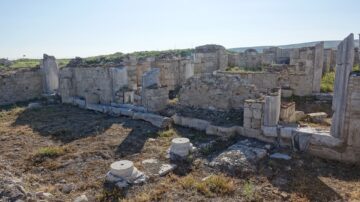On his deathbed Caliph Al-Ma’mun asked his brother and successor in the calipahte Al-Mu`tasim to put an end to the rebellion led by Babek Al-Khurrami in Azerbaijan.
The Khurramites were a corrupt group believing in incarnation and the transmigration of the soul and proclaiming dissoluteness. Caliph Al-Ma’mun sent several military expeditions one after the other to overcome this rebel group, but he died before achieving this goal.
When Al-Mu`tasim assumed the caliphate, he took upon himself to put an end to the rebellion of Babek at any cost, for this rebellion had concerned the caliphate for many years, exhausted its budget, and brought about great losses in the Muslim army.
While the Abbasid caliphate was occupied with crushing Babek’s rebellion, the Byzantine Empire seized the opportunity and attacked the borders of the Abbasid state. The emperor prepared a huge army for this purpose and led it himself. The Byzantines attacked northeast Syria and the Arab Peninsula, killing people, mutilating the dead, and enslaving more than a thousand Muslim women. Then the Byzantines returned to Constantinople, extremely pleased with the victory they had achieved and happily received by their people.
The Muslims’ Retaliation
When Al-Mu`tasim was about to crush Babek’s rebellion, the news of the Byzantine attack on the Muslim territories reached him. When the caliph knew the atrocities the Byzantines had committed in the Muslim lands, he immediately decided to retaliate and thus rallied the Muslim army for this end. He asked which of Byzantium’s cities was the most fortified and was answered “It is Amorium,” the center of Christianity in Byzantium. The Muslims had not tried to conquer it before. Al-Mu`tasim prepared a greater army than had ever been assembled before. The Muslim army headed for Amorium in Jumada Awwal AH 223. Fortune-tellers advised kings and emperors not to send big armies for war at that time lest they would be defeated, but Caliph Al-Mu`tasim did not pay attention to such prophecies and was resolved to go to war.
Conquering Angora
Al-Mu`tasim divided his army into two flanks, one under the leadership of Al-Afshin and the other under his own leadership. Al-Afshin’s flank headed for Angora, while the caliph’s headed for Amorium. The Byzantine emperor was then waiting in ambush for the Muslim army for about a month to take Al-Afshin unawares. However, the Muslim troops routed the Byzantines on Sha`ban 25, although it was heavily raining and extremely foggy. Upon this, the Byzantine emperor fled, yet there was still a part of his army in Amorium.
The Muslim troops entered Angora and then headed for Amorium, which they reached ten days later and laid siege to.
Besieging Amorium
The blockade started on Ramadan 6 with watchtowers set round the city. The Byzantine emperor sent a messenger to the caliph apologizing for the ruin his army had caused in the Muslim lands and pledged that he would build the city of Zibatra that he had demolished and release the Muslim captives. But the caliph refused to come to terms and did not allow the messenger to return before the Muslims’ had conquered Amorium.
The clashes between the two armies started with hurling rocks and shooting arrows at one another over the wall. The blockade would have lasted for a longer time but that an Arab who had been taken captive by the Byzantines told the caliph about a weak part in the wall of the city. Hearing this, the caliph ordered the attack to be intensified on this part until it was ruined. Then the Byzantine garrison had to surrender. In this way, Al-Mu`tasim entered Amorium victorious on Ramadan 17, AH 223.

